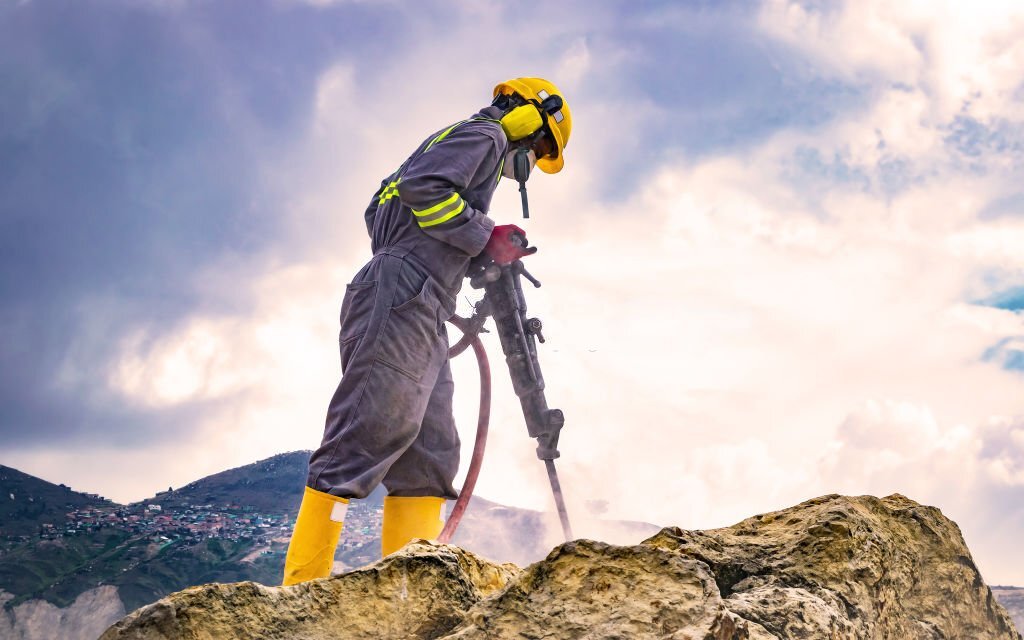
Introduction:
In the intricate choreography of resource extraction, the operation of mining drills takes center stage. A frequently contemplated question is whether the mastery of these formidable machines lies in the hands of a lone operator or necessitates the synchronized efforts of a collaborative team. To understand the dynamics of mining drill operation, one must embark on an exploration of the subtle distinctions between solo and ensemble management, unraveling the implications for both efficiency and safety in the challenging theater of mining.
Solo operation, with its undertones of autonomy, envisions a single operator orchestrating the drill through the intricate geological formations. This approach, facilitated by technological advancements and automation, offers flexibility and adaptability. However, as we broaden the scope to encompass larger mining endeavors, the need for a team becomes evident.
Ensemble management advocates for a collective effort, recognizing the multifaceted demands of resource extraction. It involves a harmonious collaboration of skilled individuals, each contributing a unique set of expertise. This collective synergy enhances not only operational efficiency but also safety measures. In the mining realm, where precision, vigilance, and coordination are paramount, the choice between solo and ensemble management shapes the narrative of successful resource extraction, blending the prowess of technology with the collaborative strength of skilled individuals.
Solo Operation:

The captivating image of a lone operator steering a mining drill not only conjures a sense of autonomy but also reflects the transformative impact of modern technological advancements on heavy equipment operations. In recent years, strides in automation and sophisticated control systems have paved the way for the feasibility of single-person operations in certain mining drills. This marks a paradigm shift from traditional team-based approaches to a model where a solitary operator can seamlessly control the intricate machinery.
The solo operation of mining drills is facilitated by cutting-edge technologies that empower operators with enhanced control and real-time monitoring capabilities. Automation streamlines the drilling process, allowing the operator to efficiently navigate through a spectrum of geological formations. This newfound autonomy does not merely translate to operating convenience; it significantly contributes to increased agility. A single operator can swiftly adapt to changing conditions, making on-the-fly decisions to optimize drilling strategies without the need for extensive coordination.
This solo approach to mining drill operation stands as a testament to the evolving landscape of heavy equipment, where the fusion of human expertise and technological innovation redefines industry standards. While teamwork remains vital in many aspects of mining, the image of a lone operator mastering the complexities of a mining drill embodies the evolving narrative of efficiency and independence in the dynamic field of resource extraction.
Team Collaboration:

On the opposing end of the spectrum, numerous mining operations advocate for a collaborative approach to the operation of mining drills, favoring a team dynamic over solitary control. The intricacies embedded in the process of resource extraction transcend the mere manipulation of a drill; they extend into multifaceted domains requiring a symphony of skills. In a team-oriented scenario, each member contributes a specialized set of expertise, creating a collective force that goes beyond the capabilities of a single operator.
Resource extraction involves not only the precise operation of the drill but also a comprehensive understanding of geological formations, real-time monitoring, safety management, and seamless coordination. These multifaceted demands necessitate a diverse skill set, and a collaborative team, with individuals specializing in various aspects of the operation, proves to be a strategic advantage. The pooling of talents enhances operational efficiency by addressing challenges holistically, from the intricacies of drilling techniques to proactive safety measures and the intricate dance of coordination required in a dynamic mining environment.
The team-centric approach fosters a collaborative synergy that is especially crucial in large-scale mining endeavors. By leveraging the collective expertise of skilled individuals, mining operations can navigate the complexities of resource-rich terrains with finesse, ensuring not only optimal drill performance but also a comprehensive and integrated approach to the myriad challenges posed by geological diversity. In essence, the preference for team collaboration in mining drill operations stems from the acknowledgment that success in resource extraction requires a harmonious convergence of specialized skills within a collaborative framework.
Efficiency and Safety Considerations:

The decision between solo and team operation in the realm of mining drills transcends mere preference; it is a strategic consideration deeply entwined with the dimensions of efficiency and safety. While solo operation holds allure for its apparent autonomy and adaptability, it finds its optimal niche in smaller-scale operations or scenarios where technologically advanced drills with automated features can perform with heightened efficiency under the guidance of a single operator.
Conversely, the vast landscapes of large-scale mining endeavors necessitate a team-oriented approach. The complexities inherent in expansive projects demand a collective effort that goes beyond the capabilities of an individual operator. A team of skilled individuals not only enhances the overall operational efficiency but also ensures a comprehensive approach to drilling. This encompasses precision in executing drilling techniques, vigilant real-time monitoring of geological conditions, and rapid response to unforeseen challenges that might arise in the dynamic mining environment.
In the context of safety, team operation serves as a robust risk management strategy. The collaborative nature of a team enables a more proactive approach to safety measures, with members collectively addressing potential hazards and contributing to a culture of heightened awareness. Furthermore, in the face of unexpected challenges, a team can provide swift and coordinated responses, mitigating risks efficiently.
Conclusion:
In the realm of mining drill operation, the solo versus team debate is nuanced, balancing autonomy with the collaborative synergy needed for efficient and safe resource extraction. The choice ultimately hinges on the scale of the operation, the technological capabilities of the drill, and the specific challenges posed by geological formations. As we navigate the evolving landscape of mining technology, the question of whether mining drills can be operated by a single person or require a team adds depth to the ongoing conversation about the future of resource extraction machinery.

